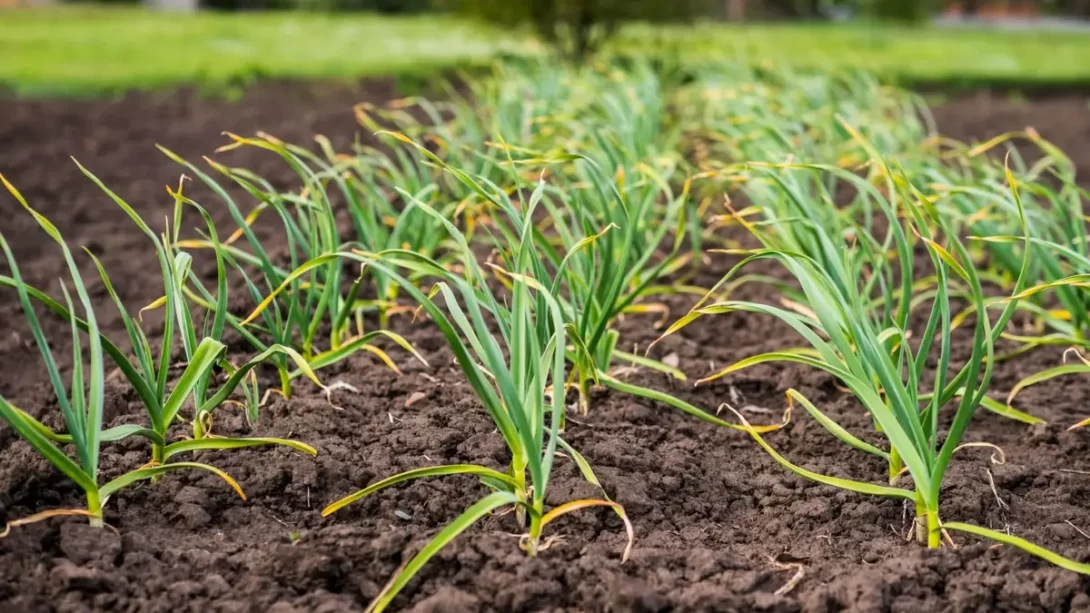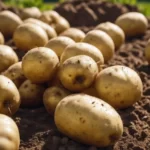Garlic is a beloved culinary ingredient worldwide, valued for its flavor and health benefits. However, growing garlic in Florida presents unique challenges due to the state’s distinct climate conditions. Understanding these challenges and how to overcome them is key to a successful garlic harvest. This article offers an in-depth guide to growing garlic in Florida, providing essential tips and techniques tailored to the region’s growing conditions.
Understanding Florida’s Climate
Florida’s climate varies from northern to southern regions, but generally, it is characterized by high humidity and temperatures that can impact gardening:
- Climate Zones: Florida spans USDA hardiness zones 8 through 11, affecting planting times and garlic variety selection.
- Challenges: The warm, humid climate can lead to issues like fungal diseases, which garlic is susceptible to.
- Best Planting Time: In Florida, garlic is best planted in the late fall or early winter when temperatures start to cool down, allowing for a period of vernalization essential for bulb development.
Selecting the Right Garlic Variety
Choosing the right variety of garlic to grow in Florida is crucial for a good yield:
- Types of Garlic: Garlic is broadly classified into two main types: softneck and hardneck. Softneck varieties generally do better in warmer climates like Florida.
- Variety Selection: Look for varieties known to perform well in warmer regions, such as ‘Creole’ garlic, which is more resistant to heat and humidity.
- Purchasing Bulbs: Source garlic bulbs from reputable nurseries or garden centers, ensuring they are disease-free and suitable for planting in Florida’s climate.
Preparing for Planting
Proper site preparation can significantly increase your chances of a successful garlic crop:
- Soil Preparation: Garlic thrives in well-drained soil rich in organic matter. Amend the soil with compost to improve fertility and drainage.
- Location: Choose a planting site that receives full sun for most of the day. Adequate sunlight is essential for bulb development.
- Planting Preparation: Separate the garlic bulbs into individual cloves just before planting, keeping the papery husk on each clove.
Planting Process
Successfully planting garlic in Florida involves understanding the correct timing and method. Here’s a step-by-step guide:
Timing
Plant garlic in late fall or early winter in Florida. This timing aligns with cooler temperatures, which are crucial for garlic’s growth cycle.
Depth and Spacing
Plant garlic cloves 2 to 3 inches deep, with the pointed end facing upward. Space the cloves about 4 to 6 inches apart to provide enough room for the bulbs to develop.
Watering
After planting, water the garlic gently but thoroughly to settle the soil around the cloves. Keep the soil consistently moist but not waterlogged.
Care and Maintenance
Regular care and maintenance are key to healthy garlic plants:
- Watering: Garlic requires consistent moisture, especially during the bulb-forming stage. Water the plants regularly, allowing the soil to dry slightly between waterings.
- Weeding: Keep the garlic bed free from weeds, which can compete for nutrients and water. Hand-pull weeds or use mulch to suppress them.
- Mulching: Apply a layer of organic mulch, such as straw or grass clippings, to retain soil moisture and regulate temperature.
- Fertilization: Apply a balanced fertilizer at planting and again in the early spring. Garlic benefits from nutrients such as nitrogen, which promotes leaf growth.
- Pest and Disease Control: Monitor for common pests like aphids and treat them promptly. Practice crop rotation and good sanitation to prevent disease.
Harvesting and Curing
Knowing when and how to harvest and cure garlic ensures the best flavor and storage quality:
- Harvesting Signs: Garlic is ready to harvest when the lower leaves start to brown and die back, typically in late spring or early summer in Florida.
- Harvesting Method: Gently dig around the bulbs to loosen them from the soil. Pull the plants up and shake off any excess dirt.
- Curing Process: Cure the garlic in a dry, well-ventilated area for several weeks until the outer skin becomes papery. This process is crucial for storage.
- Timing of Harvest: Be sure not to delay the harvest once the lower leaves begin browning, as overripe bulbs may split and won’t store well.
- Curing Conditions: Hang the harvested garlic in bundles or spread them out on a rack in a dry, shaded area with good air circulation. Avoid direct sunlight.
- Duration of Curing: The curing process typically takes about 2-4 weeks. You’ll know it’s done when the skins are dry and the roots feel brittle.
Conclusion
Growing garlic in Florida can be a rewarding experience, albeit with some unique challenges due to the climate. By selecting the right varieties, planting at the appropriate time, and providing regular care and maintenance, you can enjoy a successful harvest of this flavorful and versatile kitchen staple.
- Recap of Key Strategies: Choose suitable varieties, plant in late fall, provide consistent care, and harvest at the right time.
- The Rewards of Gardening: Beyond the culinary benefits, growing your own garlic can be a satisfying part of gardening, offering a connection to your food and the rhythm of nature.
- Final Thoughts: With patience and attention to the needs of the garlic plants, even novice gardeners in Florida can enjoy the benefits of homegrown garlic. Don’t hesitate to experiment with different varieties and techniques to find what works best in your garden.
Embrace the process of growing garlic in Florida, and you’ll likely find it a valuable addition to both your garden and your kitchen.



